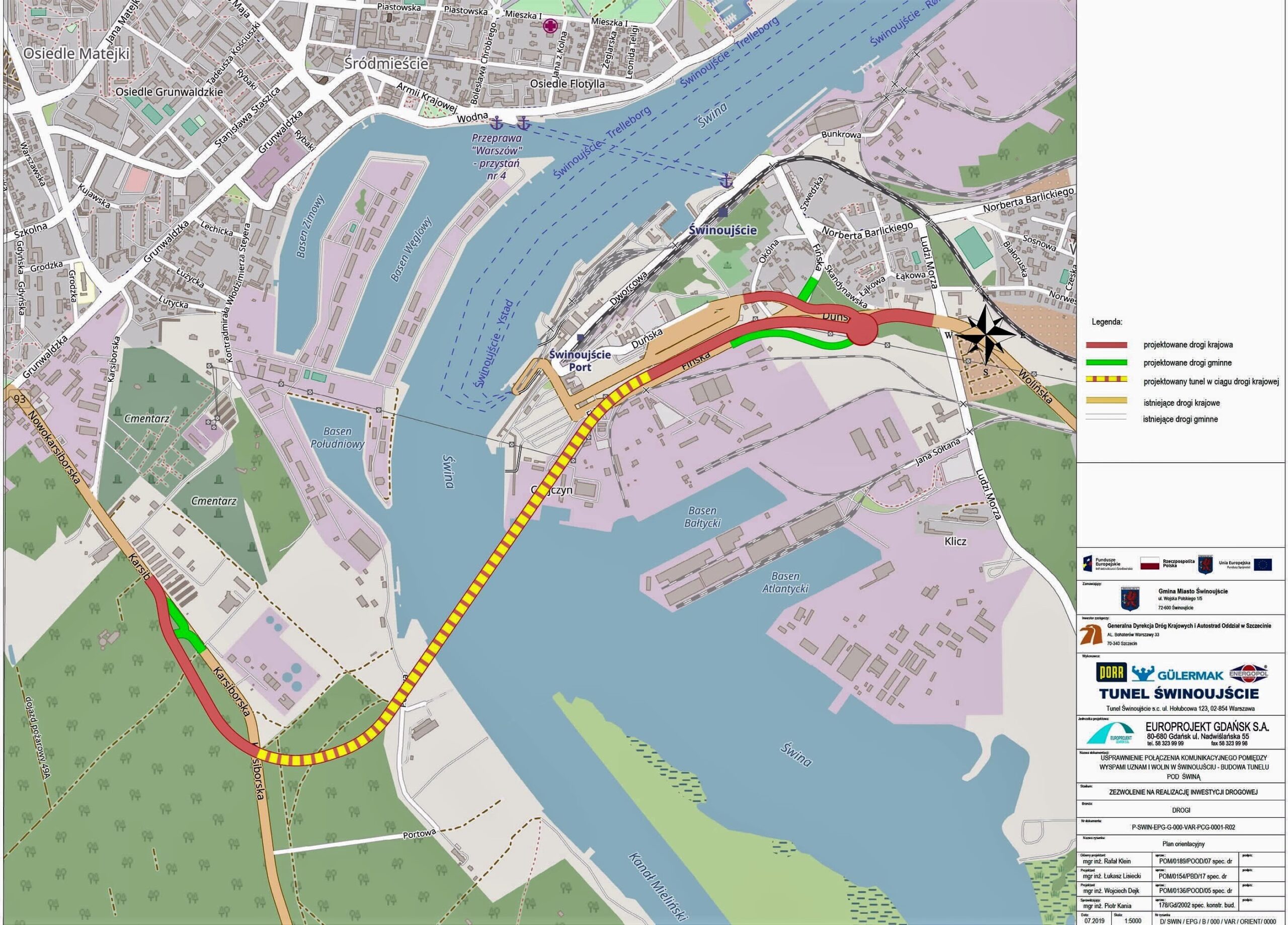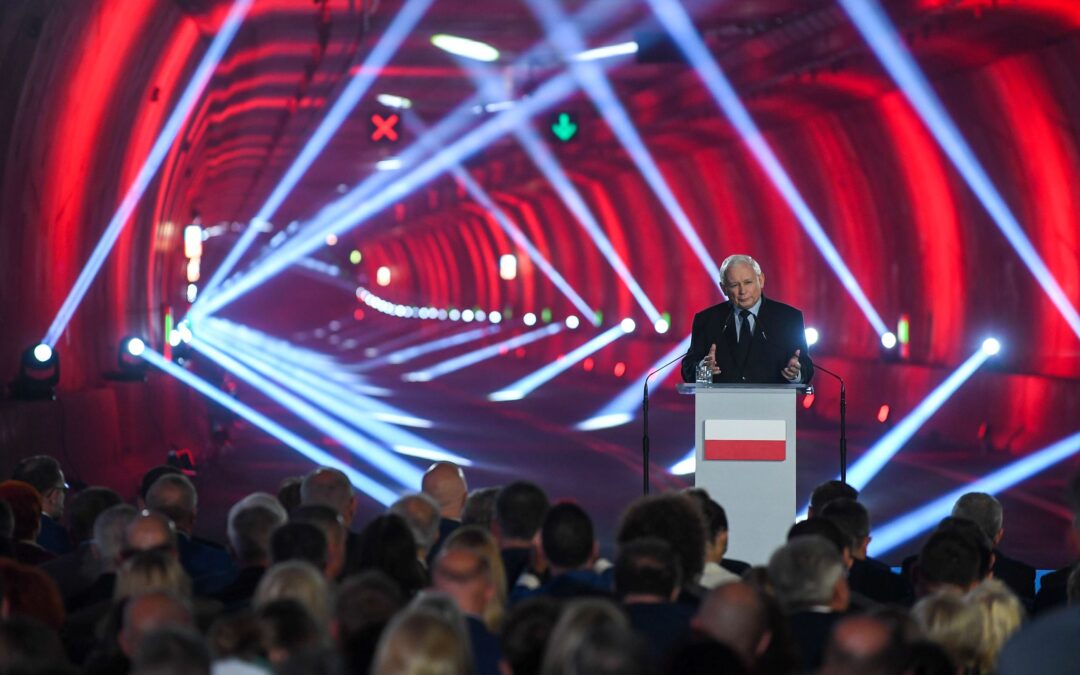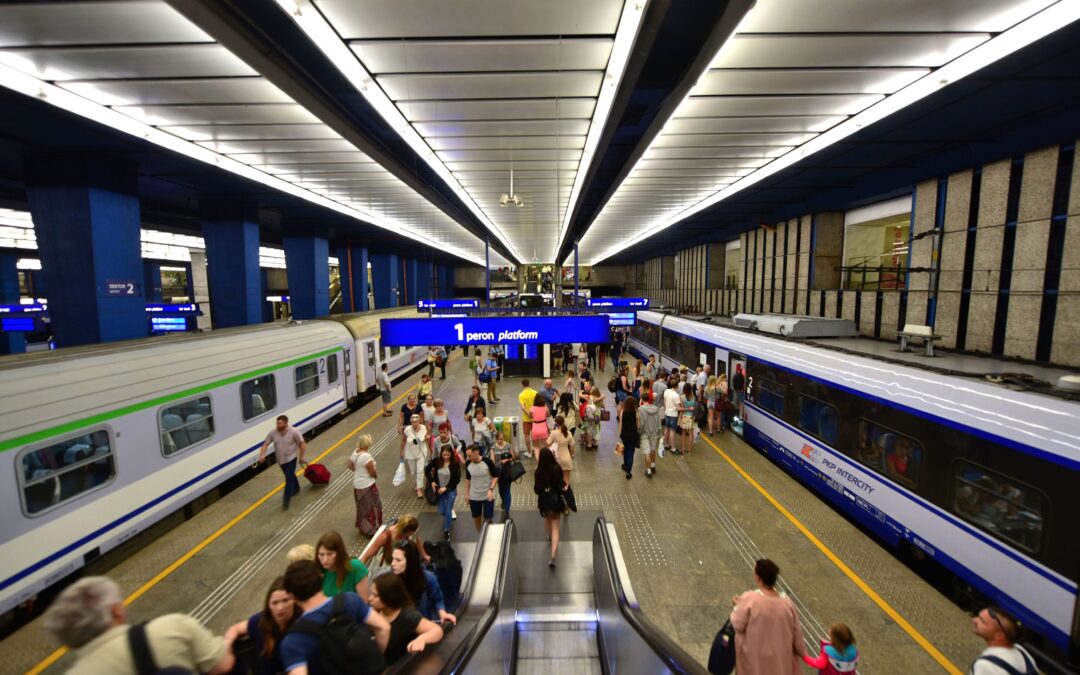Poland’s longest underwater tunnel was opened today in a ceremony attended by leading government figures, who proclaimed it as a great national success. However, opposition politicians, while welcoming the project, have noted that it was entirely funded by the European Union and local authorities.
The tunnel runs for almost 1.5 kilometres under the Świna, a channel in northwest Poland that connects the Szczecin Lagoon with the Baltic Sea. It creates a road link between the Polish city of Świnoujście – which is located on an island divided between Germany and Poland – and the Polish mainland.
Świnoujście’s mayor, Janusz Żmurkiewicz, who has run the city for a total of 26 years during two periods in office, has made it his mission to ensure the tunnel is built. Previously, Świnoujście was the only city in Poland without a road link to the rest of the country and drivers could only cross the Świna by ferry.
“[The tunnel] changes everything. I’ve been waiting for this for 50 years. This is my life’s work,” Żmurkiewicz recently told the Gazeta Wyborcza daily. He has announced that he will now not run for another term.
Residents of Świnoujście, which has a population of around 40,000, told broadcaster TVN that the new tunnel will indeed be transformative. “I have a job where I have to commute almost every day. I am very happy that I will not have to wait for the [ferry] crossing anymore,” said Mateusz Kapica.
Local authorities also believe the link will be a boon for local tourism. One of the islands on which Świnoujście is located – called Uznam in Polish and Usedom in German – is known for its sandy beaches and has been a popular tourist destination since the 19th century.

A map of the tunnel’s route (source: Gmina Miasto Świnoujście)
But at the national level, the tunnel’s opening has sparked a political dispute between the ruling Law and Justice (PiS) party and the opposition – currently campaigning ahead of this autumn’s parliamentary elections – as to who deserves credit.
Today’s opening ceremony was attended by leading PiS figures, including the party’s chairman Jarosław Kaczyński. He declared the tunnel a “symbol…of the state’s unity, strength and readiness to perform important tasks” and of how Poland is “catching up with the West” in terms of its development.
Infrastructure minister Andrzej Adamczyk said that the tunnel “would not have been built without the great determination of PiS politicians and local authorities”.
📣Tunel w Świnoujściu gotowy.
📆Już dziś wieczorem pierwsi kierowcy 🚗🚙 przejadą tunelem pod Świną, łączącym wyspy #Uznam i #Wolin.
⏱Przejazd tunelem zajmie nieco ponad 2 minuty, to zdecydowanie krócej niż przeprawa promem ⛴ przez Świnę.#ŁączymyPolskę #Świnoujście #FunduszeUE pic.twitter.com/1HKgxaXdp0— Ministerstwo Infrastruktury (@MI_GOV_PL) June 30, 2023
However, opposition figures have noted that the 900 million zloty (€202 million) it cost to build the tunnel was 85% financed by EU funds, with the remainder coming from the city of Świnoujście. They argue, therefore, that the PiS government is taking credit for a project it was not responsible for.
“PiS politicians come here and say that it is their great success, that they are uniting Poland, but the truth is completely different,” said Arkadiusz Marchewka, an MP from Civic Platform (PO), the largest opposition party, who represents the electoral district that Świnoujście is part of.
“The PiS government allocated zero zlotys from the state budget for this investment,” he continued, adding that PiS politicians are just “coming here to promote themselves”.
Elżbieta Jabłońska of PO, who is head of Świnoujście city council, told news website Money.pl that it was “ironic” the Polish government was taking credit for an EU-funded project when it has so often been critical of Brussels and accused it of harming Poland.
An EU official was prevented from speaking at the opening of a tunnel in Poland that was built mostly with EU funds.
The government had previously agreed he could speak. But in the end only Polish officials did so, and a bishop blessed the tunnel https://t.co/ekHv0K9Hpg
— Notes from Poland 🇵🇱 (@notesfrompoland) November 14, 2022
However, PiS politicians note that it was under a previous PiS-led government in 2007 that plans for the tunnel were first put in place. A PiS politician from the region, Joachim Brudziński – currently the head of the party’s election campaign and an MEP – has also strongly advocated for the project.
But those plans stalled after PO came to power in 2007, with then Prime Minister Donald Tusk saying in 2010 that the costs were too high amid the fallout from the financial crisis.
In 2014, the idea of building the tunnel was resurrected while PO was still in power, but the majority of work – including tenders and construction – took place after PiS returned to office in late 2015.
2) od 2007 roku kiedy premierem był #JK , współpracowaliśmy z Prezydentem Zmurkiewiczem i szukaliśmy sposobu sfinansowania tej inwestycji. Prace zostały wstrzymane na 8lat kiedy do władzy doszedł Tusk i PO. Dysponowali oni również środkami unijni ale władze samorządowe słyszały
— Joachim Brudziński 🇵🇱 (@jbrudzinski) May 21, 2023
Main image credit: KPRM (under CC BY-NC-ND 3.0 PL)

Daniel Tilles is editor-in-chief of Notes from Poland. He has written on Polish affairs for a wide range of publications, including Foreign Policy, POLITICO Europe, EUobserver and Dziennik Gazeta Prawna.




















